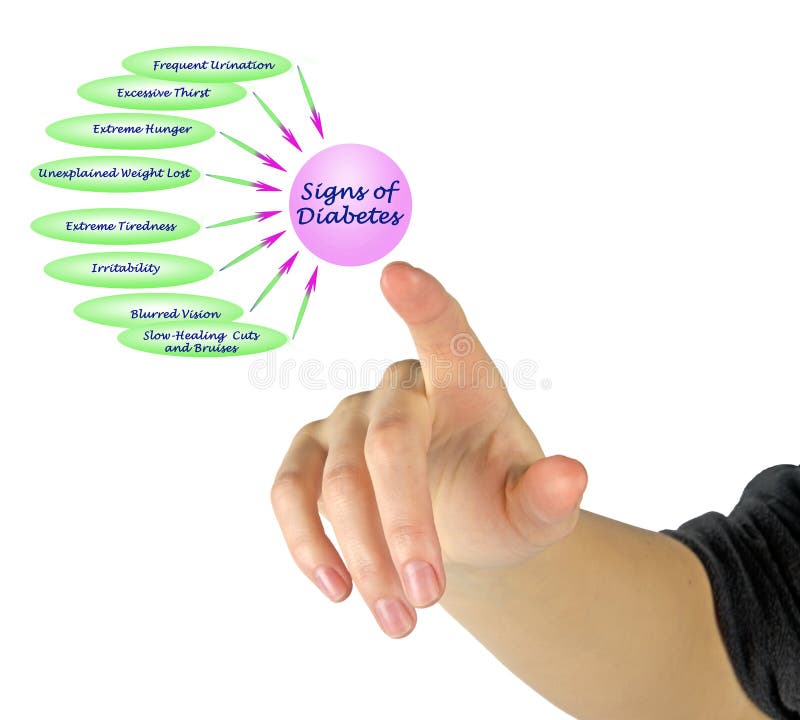Contents
Diabetes In Elderly People, Symptoms, Management
Diabetes affects more than 1 in 4 elderly in the USA. Many go undiagnosed, leading to serious complications. In addition, caregivers need to understand the symptoms of diabetes in elderly people. In fact, family members might find ways to prevent diabetes before it inflicts damage to the health of loved ones in their care.

What is Diabetes
If you have been diagnosed with diabetes, your body is having difficulty processing the sugar in the food you eat. Moreover, diabetes affects the body’s metabolism and the way it processes food for energy purposes. Also, in type 1 diabetes, the pancreas produces too little insulin to maintain normal glucose levels (blood sugar).
Know the Signs and Symptoms

Signs of Diabetes, discuss with your doctor
During the care of an aging or loved one, knowing the signs and symptoms of diabetes in older adults can help them live long and productive lives. Diabetes, also known as diabetes mellitus, is a chronic and persistent disease characterized by high blood sugar levels (blood sugar) due to the inability of the body to produce or react to insulin. Moreover, the hormone that allows blood sugar to enter the cells of the body and be used as energy. Left unmanaged, diabetes often causes serious health problems that affect the kidneys, heart, brain, eyes, and feet if left untreated.
In the US, 25.2 percent of people over 65 suffer from type 2 diabetes. Also, known diabetes symptoms such as increased urine or thirst are not as obvious in older people as in younger people but can occur if blood sugar levels are too high. However, people with type 2 diabetes may not realize they have the disease and their symptoms can develop slowly. In addition, this could go unnoticed.
Treating Diabetes in Elderly People
New and emerging information improves understanding and treatment of diabetes in older adults. An estimated 33% of adults 65 and older have a higher risk of developing diabetes-related complications (hypoglycemia, low blood glucose, kidney failure, and heart disease) than younger people with diabetes. Older people with diabetes are more likely to have high blood sugar levels over longer periods. Which leads to more vascular damage and complications.
The Management of Diabetes in the Elderly by Jeffrey I. Wallace, MD, MPH, In short, treating elderly adults with Type 2 diabetes requires consideration of the effects of aging, changes in health status, and the competing risks and benefits of therapeutic interventions. Strict glycemic control may not be a suitable treatment target for many elderly people with diabetes who are underserved. And benefit from improved glycemic controls and aggressive management of risk factors for macrovascular disease. As mentioned above, the age, health status, and motivation of older diabetics are crucial factors to be taken into account when determining treatment objectives.
One source that I personally found very helpful was the world-renowned Dr. Fuhrman. As a practicing physician, he relies on natural sources of help, focusing on nutrition. While he is not against medications, Dr. Fuhrman strongly endorses lifestyle changes, including food choices, as a first and strongest defense against health problems, including diabetes. An author of several books, Dr. Fuhrman addressed Diabetes as an individual subject in his book, The End of Diabetes. It’s available in many formats at bookstores and on Amazon.
Other Treatment Options
Insulin treatments for the elderly are similar to those for the young, but a higher prevalence of vision impairment and arthritis factors. Which increases the risk of hypoglycemia (Table 2) – can be problematic for many older diabetics. The results of a Dutch study showed that 64% of people (20 out of 319 type 2 diabetics over 70 years of age) were overtreated and frail (38). A quarter of older diabetic adults in the USA have the potential for overtreatment and are at high risk for hypoglycemia due to strict glycemic control and the use of sugar-lowering drugs (39).
The aim of this review is to discuss on the basis of current international guidelines. And widely shared glycemic targets and treatment options for older people with type 2 diabetes of the best glycemic targets and treatment options. Diabetes is one of the most common health and burn-out problems among the elderly who represent a heterogeneous and complex population. It includes both diagnosed elderly diabetics and patients with long-term diabetes outbreaks in the middle or early age . According to the Centers for Disease Control and Prevention (CDC), about six million Americans are 65 and older and 2.3 million seniors are classified as pre-diabetic.
An Ongoing Problem
As the population ages, the number of adults over 65 affected by diabetes is increasing. In 2015, the Centers for Disease Control said more than 30 million Americans had some form of diabetes. The Centers for Disease Control and Prevention (CDC) in the United States reported that 245,000 emergency admissions for hypoglycemia in adults 18 and older in 2014 or 11.2 for 1,000 people with diabetes were recorded.
Glycemic control and treatment of type 2 diabetes in adults aged 75 and over. Hospitalization for hypoglycemia in older adults and the subsequent transition to patients with diabetes over the age of 80 with severe hypoglycemia account for one in six hospitalizations . Glycosylated hemoglobin loss in community-owned nursing homes may be an option for older adults with diabetes mellitus.
Relationships between insulin resistance, hyperglycemia, physical performance, diabetes mellitus and cognitive function in healthy older adults: subtle cognitive dysfunction. Improve glucose control and reduce the risk of hypoglycemia with linagliascus. And in addition to basal insulin in elderly patients with type 2 diabetes. Intensive blood-glucose control with sulfonylurea and insulin compared to conventional treatment and complication risk in patients with type 2 diabetes (UKPDS) .
This can reduce or prevent the development of diabetes-related health problems. Whether insulin or oral medication of type 1 to control blood sugar levels: it is important to keep the medication compliant for your relatives. Your health team can help you set personal goals for diabetes management.
Natural Prevention and Control of Diabetes in Elderly People
Many people with type 2 diabetes control their blood sugar levels through diet and exercise. However, there are times when a person with diabetes needs a lifestyle change as well as medication. Older adults should consider lifestyle changes such as exercise and diet in order to control blood sugar. In addition, limit alcohol and avoid smoking.
For loved ones willing to alter their diet, managing diabetes in elderly people often improves by adjusting the diet. In fact, research and studies abound that show the ability of the vegan diet to control and often even reverse diabetes symptoms in all ages. Making good food choices enables the body to reset, fully or in part, and manage blood glucose levels better.
The general treatment targets for diabetes management in older adults are similar to those for younger people (3.3). However, the glycemic targets must be flexible for older adults. If you suffer from hyperglycemia (high blood sugar) or chronic kidney disease (CKD). Or cardiovascular disease (CVD), your doctor may adjust the dose of your diabetes medicine. This is based on your estimated glomerular filtration rate (EGFR) to reach a glycemic target and minimize complications. Medications, herbals, and supplements can affect your blood sugar levels. So make sure you tell your doctor, pharmacist, or naturopath that you have diabetes. So that they can recommend the appropriate treatment.
In Summary
Indeed, while diabetes affects more than 34 million adults in the USA, prevention and control remain possible. According to the American Diabetes Association (ADA) diabetes causes more than 85,000 deaths each year, making it the 7th leading cause of death in the US.
Prevention and Management of this dangerous, debilitating disease offer the best health option. In addition, caregivers need to remain aware of the symptoms and know what to do. However, with these measures in place, our elderly loved ones enjoy a healthier and longer life.
Read More
Diabetes Management in Elderly
Sources #####
: https://www.hormone.org/diseases-and-conditions/diabetes/diabetes-and-older-adults
: https://aging.com/seniors-and-diabetes-a-complete-guide/
: https://www.frontiersin.org/articles/10.3389/fendo.2019.00045/full
: https://www.nia.nih.gov/health/diabetes-older-people
: https://www.nature.com/articles/s41574-021-00512-2?utm_source=feedburner&utm_medium=feed&utm_campaign=Feed%3A+nrendo%2Frss%2Fcurrent+%28Nature+Reviews+Endocrinology+-+Issue%29
: https://www.medicalnewstoday.com/articles/317462
: https://www.tandfonline.com/doi/full/10.1080/00325481.2019.1578590
: https://www.aplaceformom.com/planning-and-advice/articles/type-2-diabetes-in-seniors
: http://journal.diabetes.org/clinicaldiabetes/v17n11999/Pg19.htm
: https://www.homechoicehomecare.com/senior-issues/signs-and-symptoms-of-diabetes-in-elderly-adults/
: https://www.mydr.com.au/diabetes/diabetes-in-seniors/
: https://my.clevelandclinic.org/health/diseases/7104-diabetes-mellitus-an-overview





